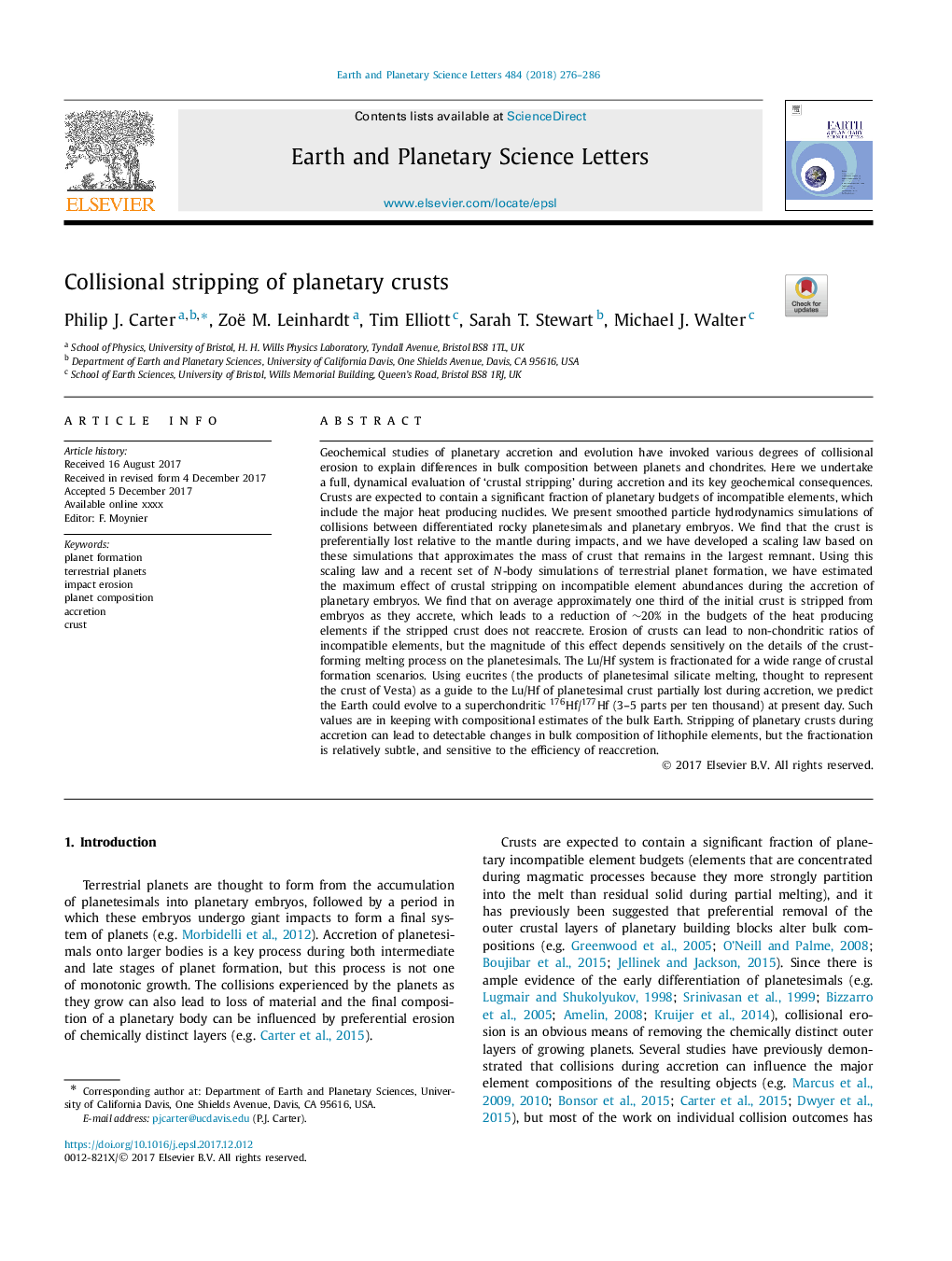| کد مقاله | کد نشریه | سال انتشار | مقاله انگلیسی | نسخه تمام متن |
|---|---|---|---|---|
| 8907166 | 1634672 | 2018 | 11 صفحه PDF | دانلود رایگان |
عنوان انگلیسی مقاله ISI
Collisional stripping of planetary crusts
ترجمه فارسی عنوان
سقوط مخرب پوسته های سیاره ای
دانلود مقاله + سفارش ترجمه
دانلود مقاله ISI انگلیسی
رایگان برای ایرانیان
کلمات کلیدی
تشکیل سیاره، سیارات زمینی، فرسایش اثر، ترکیب سیاره، تکامل پوسته،
موضوعات مرتبط
مهندسی و علوم پایه
علوم زمین و سیارات
علوم زمین و سیاره ای (عمومی)
چکیده انگلیسی
Geochemical studies of planetary accretion and evolution have invoked various degrees of collisional erosion to explain differences in bulk composition between planets and chondrites. Here we undertake a full, dynamical evaluation of 'crustal stripping' during accretion and its key geochemical consequences. Crusts are expected to contain a significant fraction of planetary budgets of incompatible elements, which include the major heat producing nuclides. We present smoothed particle hydrodynamics simulations of collisions between differentiated rocky planetesimals and planetary embryos. We find that the crust is preferentially lost relative to the mantle during impacts, and we have developed a scaling law based on these simulations that approximates the mass of crust that remains in the largest remnant. Using this scaling law and a recent set of N-body simulations of terrestrial planet formation, we have estimated the maximum effect of crustal stripping on incompatible element abundances during the accretion of planetary embryos. We find that on average approximately one third of the initial crust is stripped from embryos as they accrete, which leads to a reduction of â¼20% in the budgets of the heat producing elements if the stripped crust does not reaccrete. Erosion of crusts can lead to non-chondritic ratios of incompatible elements, but the magnitude of this effect depends sensitively on the details of the crust-forming melting process on the planetesimals. The Lu/Hf system is fractionated for a wide range of crustal formation scenarios. Using eucrites (the products of planetesimal silicate melting, thought to represent the crust of Vesta) as a guide to the Lu/Hf of planetesimal crust partially lost during accretion, we predict the Earth could evolve to a superchondritic 176Hf/177Hf (3-5 parts per ten thousand) at present day. Such values are in keeping with compositional estimates of the bulk Earth. Stripping of planetary crusts during accretion can lead to detectable changes in bulk composition of lithophile elements, but the fractionation is relatively subtle, and sensitive to the efficiency of reaccretion.
ناشر
Database: Elsevier - ScienceDirect (ساینس دایرکت)
Journal: Earth and Planetary Science Letters - Volume 484, 15 February 2018, Pages 276-286
Journal: Earth and Planetary Science Letters - Volume 484, 15 February 2018, Pages 276-286
نویسندگان
Philip J. Carter, Zoë M. Leinhardt, Tim Elliott, Sarah T. Stewart, Michael J. Walter,
